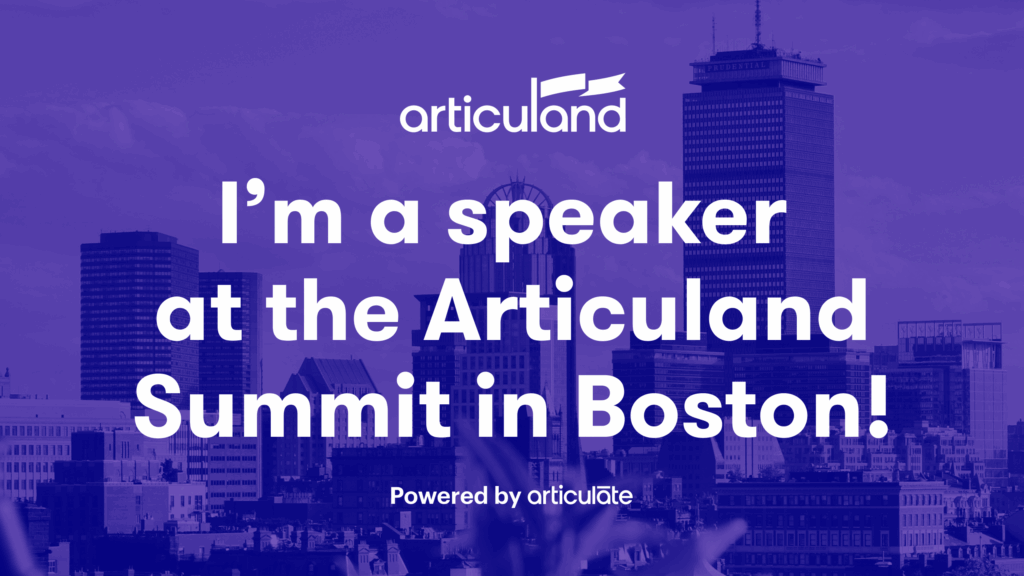As part of the eLearning Designer’s Academy Challenge, I’ve been taking this months brief and developed two versions. A version that didn’t include accessibility considerations and a refined (more) accessible version. On LinkedIn, I have been sharing the Make My Course Accessible series to pull back the curtain on what it really looks like to build an inclusive course in Articulate Storyline.
I’ve also been attending an Accessibility Book Club, where we’ve been diving into the book, Design for All Learners. These reads have sparked conversations about inclusive design, accessibility compliance, and practical strategies for creating more equitable learning experiences. Participating in this group has not only deepened my understanding of universal design principles but also reinforced my commitment to ensuring every learning solution I create is accessible, engaging, and empowering for all users. It’s been an inspiring space to connect with other L&D professionals who are equally passionate about making learning inclusive.
Another book that I’ve been highlighting this week is Designing Accessible Learning Content.
In this blog post, I’m recapping key insights from the series, along with some practical tips and resources you can use in your own work.
Why Accessibility Matters
Creating accessible learning can seem overwhelming, but every little thing adds up. Accessibility considerations ensure that every learner, regardless of ability, has a meaningful and equitable learning experience. Following accessibility standards like WCAG (Web Content Accessibility Guidelines) isn’t just best practice; it’s essential design.
Check out each version of my course below:
Color Considerations
Color contrast can make or break readability. I talked through how to choose accessible color palettes that support learners with low vision or color blindness. Tools like the WebAIM Contrast Checker, Adobe Color Contract Analyzer, and Color Contrast Analyser, can help ensure your color combinations meet WCAG contrast ratio requirements.
User Control / Navigation
Giving learners control over their experience is important. That includes the ability to pause, stop, or hide audio/video elements and navigate at their own pace. WCAG success criteria remind us that learners should be able to consume content in a way that works for them.
Closed Captions, Transcript, and Spacing
Every audio element in a course should include closed captions, not only for learners who are Deaf or hard of hearing but also for those learning in sound-off environments. Offering a transcript is another way to add flexibility for users who need to find info quickly.
I shared a quick workflow for generating and syncing captions in Articulate Storyline. A few tools that I highlighted in this video include WellSaid and Descript.
Focus Order, Alt Text, and Accessibility Statement
Tab order might seem small, but it’s a huge deal for some people. I walked through how to manually set the focus order in Storyline so that keyboard users and screen readers can easily navigate content in a logical way. Check out this awesome article from Yukon Learning for more info on how to set correct Focus Order.
Did you know Storyline has a built-in Accessibility Checker? I demoed how to use this tool to catch missing alt text, closed captions, and focus order gaps. It’s not perfect, but it’s a great place to start!
Finally, an accessibility statement can be added to any digital learning experience that communicates your commitment to inclusivity and transparency. It not only outlines the steps you’ve taken to make your content accessible but also provides learners with a clear path to request accommodations or report barriers. By including an accessibility statement, you demonstrate that accessibility isn’t an afterthought. It builds trust, supports legal compliance, and ensures all users, regardless of ability, feel welcomed and supported in their learning journey.
Need Support?
Have questions about accessibility or want help applying these practices to your next project? Let’s chat!
I’ll be speaking about essential accessibility considerations at the Articuland Summit in Boston this September!
Follow this link for more details!


